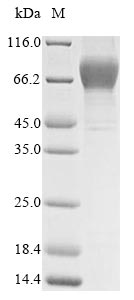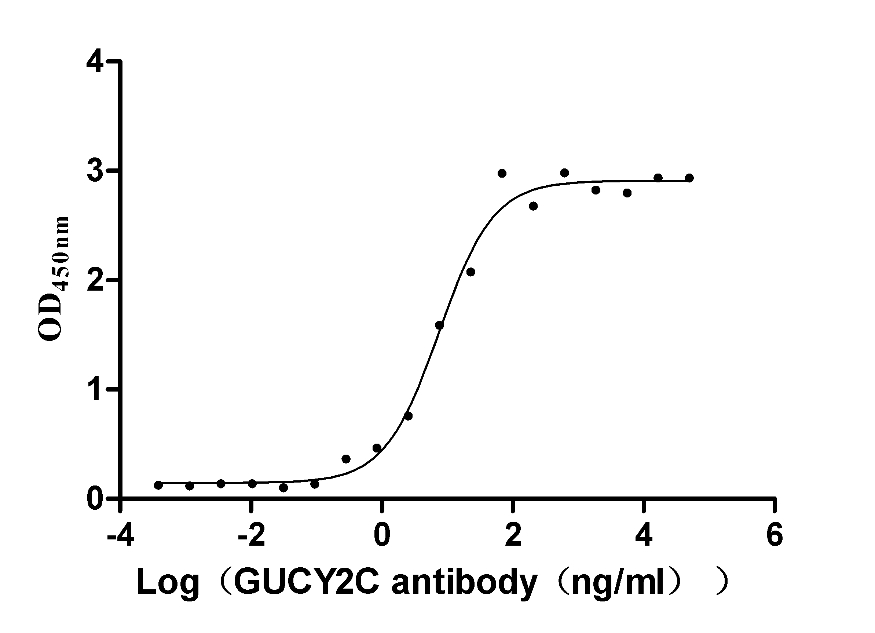Recombinant human GUCY2C protein (24-430 AA) was fused to a 10xHis-tag at the N-terminus and expressed in the mammalian cells. This GUCY2C protein is characterized by high purity (>95%, SDS-PAGE), low endotoxin content (<1.0 EU/ug of the protein, LAL method), and biological activity. Its activity has been validated by binding to the anti-GUCY2C recombinant antibody in a functional ELISA, with the EC50 of 11.89-24.13 ng/mL. The GUCY2C protein has a calculated molecular weight of 49.6 kDa. It migrates as 60-90 kDa under reducing conditions (SDS-PAGE) due to glycosylation. And it is available now.
GUCY2C, an intestine-specific expressed transmembrane protein, participates in regulating intestinal function and Na+ dynamic balance, and promoting food digestion and absorption after being activated by STa, guanosine, and uroguanosine. GUCY2C is considered a colorectal cancer-specific antigen due to its high intestinal tissue specificity. To date, the GUCY2C protein has been used in vaccines, immunotoxins, and CAR-T cells, among other immunotherapies. Some trials have achieved good clinical results. The development and research of GUCY2C recombinant protein can promote and push the development of vaccines and treatment of GUCY2C-expressing tumors of the intestine.








